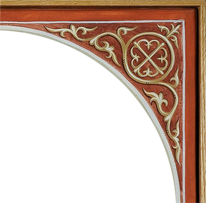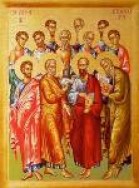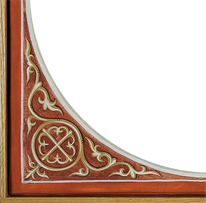The Orthodox Church is the one Church founded by Jesus Christ and his apostles, begun at the day of Pentecost with the descent of the Holy Spirit in the year 33 A.D. It is also known (especially in the contemporary West) as the Eastern Orthodox Church or the Greek Orthodox Church. It may also be called the Orthodox Catholic Church, the Orthodox Christian Church, the one, holy, catholic, and apostolic Church, the Body of Christ, the Bride of Christ, or simply the Church.
The bishops of the Orthodox Churches trace unbroken succession to the very apostles themselves, therefore ultimately receiving their consecrations from our Lord Jesus Christ. All the bishops of the Eastern Orthodox Churches, no matter their titles, are equal in their sacramental office. The various titles given to bishops are simply administrative or honorific in their essence. At an ecumenical council, each bishop may cast only one vote, whether he is the Ecumenical Patriarch or simply an auxiliary bishop without a diocese. Thus, there is no equivalent to the Roman Catholic papacy within the Eastern Orthodox Churches.
As with its Apostolic succession, the faith held by the Church is that which was handed by Christ to the apostles. Nothing is added to or subtracted from that deposit of faith which was "handed once for all to the saints" (Jude 3). Throughout history, various heresies have afflicted the Church, and at those times the Church makes dogmatic pronouncements (especially at ecumenical councils) delineating in new language what has always been believed by the Church, thus preventing the spread of heresy and calling to repentance those who rend asunder the Body of Christ. Its primary statement of faith is the Nicene-Constantinopolitan Creed.
The Orthodox Church recognizes as authoritative the decisions of the seven ecumenical councils that met between 325 AD and 787 AD and defined the basic doctrines on the Trinity and the Incarnation. In later centuries Orthodox councils also made doctrinal definitions on Grace (1341 AD, 1351 AD) and took a stand in reference to Western teachings.
The Church keeps the early traditions of Christianity, infants receive the Eucharist and confirmation, and the episcopate and the priesthood are understood in the light of Apostolic succession. (Apostolic Succession is understood to be the passing on of the Holy Tradition by right-believing Bishops). Both married men and monks may become priests, but priests, bishops, and monks may not marry. The veneration of Mary, as Theotokos (Mother of God) is central to Orthodox Incarnational Theology, and the intercession of saints is also emphasized in the Orthodox Holy Tradition.
After an early controversy on the subject, the Icons, of Christ, the Virgin Mary, and the saints are now seen as visible witnesses to the fact that God has taken human flesh in the person of the Lord Jesus Christ.The Liturgy used by the Orthodox Church has been translated from Greek into many languages. It is always sung, not just spoken. The faithful receive Holy Communion on a spoon. They are given both the consecrated bread (NIKA), and the sanctified wine from the gifts offered and sanctified at the given Divine Liturgy. Holy Communion is never taken from any reserve.
Monasticism, which had its origins in the Christian East (Egypt, Syria, Cappadocia), has since been considered in the Orthodox Church as a prophetic ministry of men and women, showing through their mode of life the action of the Holy Spirit. The monastic republic of Mount ATHOS, Greece, is still viewed among Orthodox Christians as a center of spiritual vitality.
|




